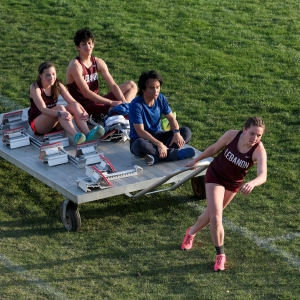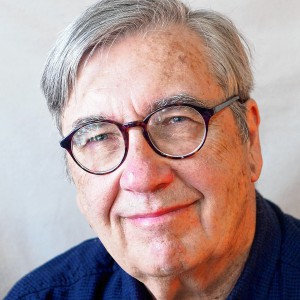After spinal injury, Windsor man created his own robotic leg brace
| Published: 11-27-2022 6:02 AM |
WINDSOR — In 2013, Kiel Alarcon was working as a communication assistant at Dartmouth College in Hanover and commuted to work daily by bicycle from his home in Windsor, which is more than 40 miles round-trip, as part of a national bicycling challenge. On one of those rides, Alarcon was biking up a hill near the Hanover Country Club golf course when he felt what he thought at the time was a muscle spasm or pinched nerve in his back.
“I had weakness in my legs, my limbs were going (numb) and then coming back, it was very bizarre,” Alarcon said.
He said doctors at Mt. Ascutney Hospital and Health Center in Windsor told him he’d had a panic attack, which he accepted because he’d never experienced one before and didn’t know the symptoms. But when his mother checked in on him a day later and discovered he hadn’t needed to use the bathroom since he’d left the hospital, they went to the Dartmouth Hitchcock Medical Center in Lebanon for further tests.
Urinary retention is a symptom of spinal cord injuries, and Alarcon said medical staff at DHMC drained two liters of urine from his body that day. An MRI confirmed the damage: a tumor growing on his spine had ruptured and bled down his spinal cord.
Surgery to remove the benign tumor was successful, but the damage done to Alarcon’s body was significant. He can no longer feel anything below his chest and needs the assistance of a walking cane to move around.
But over the past two years, Alarcon has developed and built his own robotic leg brace that’s helped him walk without the need for the cane and even helped him summit Mount Ascutney. The brace, which Alarcon said is still a work in progress, started off as a hobby meant to pass the time as he adjusted to the changes in his life after the injury.
He said the early days following his injury were “torturous” and “like hell.” Self-described as someone who always feels the need to be doing something, Alarcon was compelled to stay busy.
He began teaching himself how to code, in part because he wanted to develop a marketable skill he could manage from his bed.
Article continues after...
Yesterday's Most Read Articles
 Hartland voters successfully petition for school budget revote
Hartland voters successfully petition for school budget revote
 JAG Productions announces closure, citing ‘crisis facing the arts’
JAG Productions announces closure, citing ‘crisis facing the arts’
 Hanover’s Perreard may soon capture the attention of collegiate coaches in two athletic pursuits
Hanover’s Perreard may soon capture the attention of collegiate coaches in two athletic pursuits
Alarcon has wanted to find a new job — his position at Dartmouth was defunded in 2014 — but it’s tricky. He currently receives disability payments from Dartmouth, and if he got a new job and it didn’t work out, he wouldn’t be able to receive those payments again.
He also can’t take a part-time job and work his way up because he’d need to work 40 hours per week just to keep his health insurance, he said, which is a necessity because of the specific items he needs on a day-to-day basis like catheters.
Another factor that hurts his job prospects is the fact that he also has chronically low blood pressure because of the injury, which he calls the worst part of the ordeal and the thing that limits him more than his mobility issues.
“I can only be upright for like, two or three hours at a time, if I’m really pushing it, and then I need to rest,” Alarcon said. “I mostly spend my days in the recliner.”
His nights are often spent with a guitar in his hands. Alarcon is a founding member of What Doth Life, a collective/co-op of local bands based in Windsor, and he plays guitar in five bands associated with the group.
Alarcon, 38, minored in music at Castleton (Vt.) University and said one fallout from wanting to stay busy through his disability was that he “ended up joining everyone’s band” when asked. Band practices and shows are the most strenuous things he has to do, as he’s often standing while playing guitar for hours at a time.
Alarcon actively searched for a remedy for his disability. He tried getting into clinical trials for stem cell treatment, he said, but was denied.
He looked into exoskeleton suits and had a consultation for a leg brace known as a “C-brace,” but found that his movement issues posed a specific problem that the brace couldn’t help remedy. Exoskeleton suits are also incredibly expensive, costing in the vicinity of $85,000, something Alarcon couldn’t afford.
“(Leg braces) all seem to work by holding your weight, (but) I can push off, I can kick out with this foot,” Alarcon said. “I just can’t bring it back in.”
He also uses a foot-drop brace, which helps prevent his foot from inverting during walking, because he can push his toes out but can’t bring his foot back up.
Frustrated by the lack of solutions out there, Alarcon decided early last year he’d try to build his own leg brace. He’d developed a few ideas after years of researching different leg braces and wanted to give building one that suited his specific needs a shot.
He’s got one design, consisting of an old knee brace, a servo motor, pulleys, two buck converters that help regulate voltage output, a microchip and about 100 lines of Python code that’s powered by a drill battery, up and running.
Attached to the brace is an object-acceleration sensor, known as an accelerometer, that detects the angle his leg is at while walking and helps him repeat his walking gait. As he swings his arm forward, it tells his knee to bend, and as it swings forward the angle changes until it tells the knee to straighten again.
Alarcon said he’s never taken a computer science course in his life, so there was a lot of trial and error involved. He burned through several computer boards because the battery was outputting too high a voltage, but the buck converters later helped remedy that.
He said there’s more work to be done as it’s difficult for him to use going up uneven terrain and it needs to be lined up perfectly with his leg or else it doesn’t bend as much as it needs to. The accelerometer has a manual mode, which he used while climbing Mount Ascutney in October of this year.
“Right now it’s really only good for moving forward,” Alarcon said. “It’s not great for just stepping around or turning.”
Altogether, Alarcon said the robotic brace was relatively inexpensive to build at around $200. That’s not all he spent because he went through other designs and components, like using a muscle sensor on his thigh that would react to his brain signaling his thigh muscle to move.
Because he’s been walking with a crutch for so long, Alarcon said, he had to relearn how to walk normally while wearing it, noting that while using the crutch he developed a habit of swinging his leg out.
Alarcon’s trip up Ascutney, which started at the parking lot near the summit because he was concerned his blood pressure would be an issue if he started the hike any lower down, had him traversing over rocks and big tree roots. He’s also used the brace to go on walks in Windsor and around Lake Runnemede.
He said the first few times he took the robotic brace for a spin made him feel a bit uncomforttable.
“Oh my god, first of all (this) feels very weird,” Alarcon remembers thinking. “Because I haven’t been able to have a normal walking gait, and I was trying to be very cautious about not swinging my hip out or hiking my hip up — but it felt good, not only physically but (also) I was making progress.”
When he started working on the robotic brace, Alarcon didn’t expect to make it this far. He’s not very self-congratulatory by nature, he said, but enjoys learning new skills and problem-solving. Working on brace designs and learning how to code from the comfort of his recliner was a way to pass the time.
He next wants to use the brace to walk through Paradise Park, though he’s waiting for a drier day (there were repeated rain showers in Windsor on the day of the interview) as the robotic brace isn’t waterproof, which is another thing he’s working on.
Alarcon said he isn’t interested in selling or patenting his robotic brace. He open-sourced the design and code on GitHub and has gotten positive feedback from people. He said he hasn’t heard from other people with disabilities, which is what he wants because he hopes his work can help someone else someday.
“Doing this was literally just so I can walk, that’s the reward,” Alarcon said. “… I just want to be able to document it all and, if it helps someone else out there, great.”
Ray Couture can be reached at 1994rbc@gmail.com.

 At Dartmouth, hundreds protest ongoing war in Gaza and express support for academic freedom
At Dartmouth, hundreds protest ongoing war in Gaza and express support for academic freedom Over Easy: ‘A breakfast without a newspaper is a horse without a saddle’
Over Easy: ‘A breakfast without a newspaper is a horse without a saddle’
